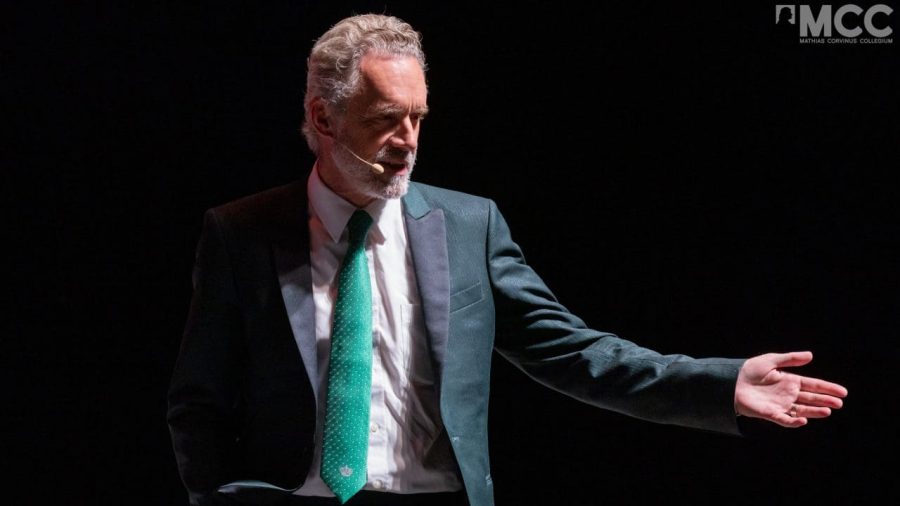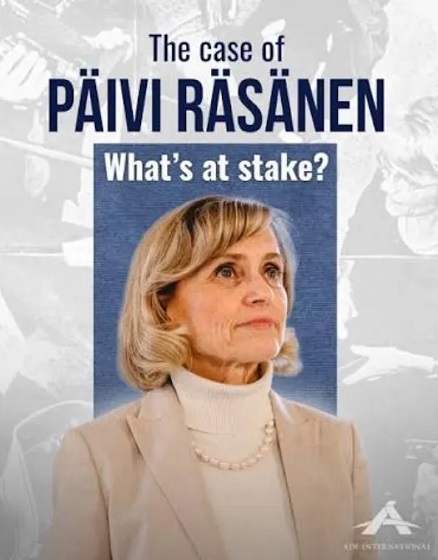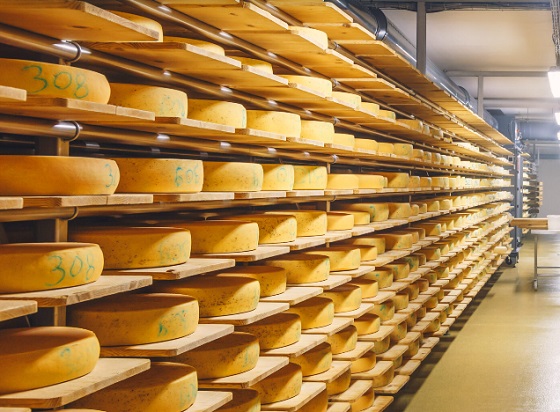Frontier Centre for Public Policy
How Canadians lost the rule of law

From the Frontier Centre for Public Policy
Universal problems are evident in the rejection of Jordan Peterson’s appeal against Ontario’s College of Psychologists (CPO) in Divisional Court. They had sought to re-educate him as a condition for retaining his license—because he openly ridiculed public figures. But as Dr. Peterson related in the National Post, October 11, they’ve failed to find a brainwasher for him.
Precedent now confirms that unaccountable tribunals may override apparent Charter rights. That may declare as unacceptable anyone’s contrary opinion or peaceful protest. Dr. Peterson’s case follows the way the courts clobbered supporters of the 2022 Freedom Convoy protest on Parliament Hill. Now members of all regulated professions are especially at risk, including doctors, lawyers and teachers. Instead of protecting citizens from overreach, the courts have become the instrument for enforcing tyranny.
As the Toronto Star reported on the first press conference by Chief Justice Richard Wagner in 2018, he said his court was “the most progressive in the world.” Today, progressive is synonymous with the absurdities that Dr. Peterson ridiculed. Wanjiru Njoya, a legal scholar at the University of Exeter has been quoted as saying that the courts automatically define as unreasonable any perspectives falling outside progressive boundaries.
A further foundational problem is that judges now routinely preside over cases where they have an obvious bias or personal connection, and then defer to those interests. Canadian judges should follow this admonition in the American Judicial Code? “Any justice, judge, or magistrate judge … shall disqualify himself in any proceeding in which his impartiality might reasonably be questioned.”
Justice Paul Schabas wrote the Decision for Dr. Peterson’s appeal before Divisional Court. However, he had previously been involved, personally, on the side of the argument opposite that of Dr. Peterson. In June 2018, as head of the Law Society of Ontario (LSO), he oversaw the imposition on lawyers of their controversial Statement of Principles (SOP). As a condition of licensing, it required a commitment to Equity, Social and (Corporate) Governance (ESG). Later, the LSO withdrew it following protests like African-Canadian Elias Munshya’s in Canadian Lawyer: “Lawyers play an essential role in our society; that role, however, does not include becoming state agents that parrot state-sponsored speech.”
Chief Justice Wagner recently confirmed that courts may now freely override common law precedent. He said that: “Apart from considering [historic] decisions as part of our legal cultural heritage, no one today will refer to a decision from 1892 to support his claim.” He added that “sometimes a decision from five years ago is an old decision ….”
Accordingly, the Supreme Court had simply disregarded century-old precedents when declaring Marc Nadon ineligible to join their club. My book Justice on Trial explains that many earlier appointments did not meet their newfound qualifications.
The subjective word “reasonable” supports much of Canada’s problematic jurisprudence. Absent objective criteria, judges reward friends and crush others as they may.
Justice Schabas said several comments similar to this one were unacceptable: “Dr. Peterson posted a tweet in May 2022, in which he commented on a Sports Illustrated Swimsuit Edition cover with a plus-sized model, saying: ‘Sorry. Not Beautiful. And no amount of authoritarian tolerance is going to change that.’”
Dr. Peterson objected that the CPO’s Code of Ethics should not constrain such “off duty opinions.” The Code says “[p]ersonal behaviour becomes a concern of the discipline only if it is of such a nature that it undermines public trust in the discipline as a whole or if it raises questions about the psychologist’s ability to carry out appropriately his/her responsibilities as a psychologist.” So which magazines’ cover pictures are not of public interest?
Justice Schabas continued, “The [CPO’s investigating] Panel also noted Dr. Peterson’s reliance on the Supreme Court’s decision in Grant v. Torstar, 2009 SCC 61, [2009] 3 SCR 640, a defamation case which held at para. 42, that “freedom of expression and respect for vigorous debate on matters of public interest have long been seen as fundamental to Canadian democracy … all Canadian laws must conform to it.” Why did Justice Schabas override this settled law?
Europe’s Charter of Fundamental Rights says, “Everyone has the right to freedom of expression. This right shall include freedom to hold opinions and to receive and impart information and ideas without interference by public authority and regardless of frontiers.” So how can a right be fundamental in other free and democratic countries but not in Canada?
And why did the court of Chief Justice Wagner decline to hear Dr. Peterson’s appeal and allow Justice Schabas’ decision to stand? No prize for your answer!
As long advocated by The Globe & Mail and The Toronto Star, Dr. Peterson’s case shows the need to end self-regulation and in-house discipline for lawyers and judges. That happened for lawyers for England and Wales in 2007. So why not in Canada?
Ottawa resident Colin Alexander’s latest books are Justice on Trial: Jordan Peterson’s case shows the need to fix a broken system; and Ballad of Sunny Ways: Popular traditional verse about living, loving and money.
Frontier Centre for Public Policy
Canada Lets Child-Porn Offenders Off Easy While Targeting Bible Believers

From the Fr0ntier Centre for Public Policy
By Lee Harding
Judges struck down one-year minimum prison sentences for child pornography possession. Meanwhile, the chair of the Parliamentary Human Rights Committee publicly stated that religious scriptures condemning homosexuality are “hateful.” Lee Harding says the 1982 Charter has led to an inversion of Canadian values.
Light sentences for child-porn possession collide with federal signals that biblical texts could be prosecuted as hate
Was Canada’s 1982 Charter meant to condemn the Bible as hate literature or to weaken sentencing for child pornography? Like it or not, that is the direction post-Charter Canada is moving.
For Halloween, the black-robed justices at the Supreme Court of Canada ruled that a one-year mandatory sentence for accessing or possessing child sexual abuse materials amounted to “cruel and unusual punishment.” The judgment upheld a similar ruling from the Quebec Court of Appeal.
A narrow 5-4 majority leaned on a hypothetical. If an 18-year-old received a sexually explicit image from a 17-year-old girlfriend, that image would technically be child porn. If prosecuted, the recipient could face a one-year minimum sentence. On that basis, the judges rejected the entire minimum sentence law.
But the real case before them was far more disturbing. Two Quebec men possessed images and videos that were clearly the result of abuse. One had 317 unique images of child porn, with 90 per cent showing girls aged three to six years old forced into penetration and sodomy by adults or other minors. The other had 531 images and 274 videos of girls aged five to 10 engaged in sexual acts, including anal and vaginal penetration and, in some cases, multiple children.
The sentences were light. The first offender received 90 days of intermittent imprisonment, served concurrently, plus 24 months of probation. The second received nine months of imprisonment and the same probation period. How is this acceptable?
The judgment did not emerge without warning. Daniel A. Lang, a Liberal campaign chair appointed to the Senate by Lester B. Pearson, saw this coming more than 40 years ago. On April 23, 1981, he expressed concerns that the new Constitution could be used to erode basic decency laws. He pointed to the U.S. experience and predicted that Canada could face a wave of cases challenging laws on “obscenity, pornography and freedom of speech,” leading to the “negation of federal or provincial legislation.”
His warning has come true. If Parliament wants to restore mandatory minimum sentences, it can do so by passing a new law that removes the obscure scenario judges used to strike them down. Section 33, the notwithstanding clause, gives elected officials the power to override court rulings for up to five years at a time.
This reflects Canada’s own system. In the British tradition Canada inherited, Parliament—not the courts—is the ultimate authority. British common law developed over centuries through conventions and precedents shaped by elected lawmakers. Section 33 protects that balance by ensuring Parliament can still act when judges disagree.
There is a democratic check as well. If a government uses Section 33 and voters believe it made the wrong call, they can remove that government at the next election. A new government can then follow the judges’ views or let the old law expire after five years. That accountability is precisely why Section 33 strengthens democracy rather than weakening it.
Yet today, Ottawa is working to limit that safeguard. In September, the Carney Liberals asked the Supreme Court to rule on new limits to how legislatures can use Section 33. Five premiers wrote to Carney to oppose the move. Former Newfoundland and Labrador premier Brian Peckford, the last living signatory to the agreement that produced the 1982 Constitution Act, has also condemned the attempt as wrongful.
The judges will likely approve the new limits. Why would they refuse a chance to narrow the one tool elected governments have to get around their rulings? For decades, the Supreme Court has made a habit of striking down laws, telling Parliament it is wrong and forcing political change.
And while minimum sentences for child-porn offenders fall, the Carney cabinet is focused on something else entirely: prosecuting Bible believers for alleged hate.
The quiet part was said out loud by Montreal lawyer Marc Miller, former minister of immigration and citizenship and chair of the Parliamentary Human Rights Committee. On Oct. 30, he told the committee, “In Leviticus, Deuteronomy, Romans, there’s other passages, there’s clear hatred towards, for example, homosexuals.”
The former minister added, “There should perhaps be discretion for prosecutors to press charges … [T]here are clearly passages in religious texts that are clearly hateful.”
That is the former minister’s view. Instead of Bible thumpers, we now have Charter thumpers who use their “sacred” document to justify whatever interpretation suits their cause and wield it against their ideological opponents. When wokeness hardens into dogma, disagreement becomes heresy. And we know what happens to heretics.
A country that lets child-porn offenders off easy while it hunts down Bible believers for fines and possible prison has lost its way. Most Canadians would reject this trade-off, but their rulers do not, whether in cabinet or on the judges’ bench. A dark shadow is settling over the country.
Lee Harding is a research fellow for the Frontier Centre for Public Policy
Business
Ottawa Pretends To Pivot But Keeps Spending Like Trudeau

From the Frontier Centre for Public Policy
New script, same budget playbook. Nothing in the Carney budget breaks from the Trudeau years
Prime Minister Mark Carney’s first budget talks reform but delivers the same failed spending habits that defined the Trudeau years.
While speaking in the language of productivity, infrastructure and capital formation, the diction of grown-up economics, it still follows the same spending path that has driven federal budgets for years. The message sounds new, but the behaviour is unchanged.
Time will tell, to be fair, but it feels like more rhetoric, and we have seen this rhetoric lead to nothing before.
The government insists it has found a new path, one where public investment leads private growth. That sounds bold. However, it is more a rebranding than a reform. It is a shift in vocabulary, not in discipline. The government’s assumptions demand trust, not proof, and the budget offers little of the latter.
Former prime ministers Jean Chrétien and Paul Martin did not flirt with restraint; they executed it. Their budget cuts were deep, restored credibility, and revived Canada’s fiscal health when it was most needed. Ottawa shrank so the country could grow. Budget 2025 tries to invoke their spirit but not their actions. The contrast shows how far this budget falls short of real reform.
Former prime minister Stephen Harper, by contrast, treated balanced budgets as policy and principle. Even during the global financial crisis, his government used stimulus as a bridge, not a way of life. It cut taxes widely and consistently, limited public service growth and placed the long-term burden on restraint rather than rhetoric. Carney’s budget nods toward Harper’s focus on productivity and capital assets, yet it rejects the tax relief and spending controls that made his budgets coherent.
Then there is Justin Trudeau, the high tide of redistribution, vacuous identity politics and deficit-as-virtue posturing. Ottawa expanded into an ideological planner for everything, including housing, climate, childcare, inclusion portfolios and every new identity category.
The federal government’s latest budget is the first hint of retreat from that style. The identity program fireworks are dimmer, though they have not disappeared. The social policy boosterism is quieter. Perhaps fiscal gravity has begun to whisper in the prime minister’s ear.
However, one cannot confuse tone for transformation.
Spending still rises at a pace the government cannot justify. Deficits have grown. The new fiscal anchor, which measures only day-to-day spending and omits capital projects and interest costs, allows Ottawa to present a balanced budget while still adding to the deficit. The budget relies on the hopeful assumption that Ottawa’s capital spending will attract private investment on a scale economists politely describe as ambitious.
The housing file illustrates the contradiction. New funding for the construction of purpose-built rentals and a larger federal role in modular and subsidized housing builds announced in the budget is presented as a productivity measure, yet continues the Trudeau-era instinct to centralize housing policy rather than fix the levers that matter. Permitting delays, zoning rigidity, municipal approvals and labour shortages continue to slow actual construction. These barriers fall under provincial and municipal control, meaning federal spending cannot accelerate construction unless those governments change their rules. The example shows how federal spending avoids the real obstacles to growth.
Defence spending tells the same story. Budget 2025 offers incremental funding and some procurement gestures, but it avoids the core problem: Canada’s procurement system is broken. Delays stretch across decades. Projects become obsolete before contracts are signed. The system cannot buy a ship, an aircraft or an armoured vehicle without cost overruns and missed timelines. The money flows, but the forces do not get the equipment they need.
Most importantly, the structural problems remain untouched: no regulatory reform for major projects, no tax-competitiveness agenda and no strategy for shrinking a federal bureaucracy that has grown faster than the economy it governs. Ottawa presides over a low-productivity country but insists that a new accounting framework will solve what decades of overregulation and policy clutter have created. The budget avoids the hard decisions that make countries more productive.
From an Alberta vantage, the pivot is welcome but inadequate. The economy that pays for Confederation receives more rhetorical respect, yet the same regulatory thicket that blocks pipelines and mines remains intact. The government praises capital formation but still undermines the key sectors that generate it.
Budget 2025 tries to walk like Chrétien and talk like Harper while spending like Trudeau. That is not a transformation. It is a costume change. The country needed a budget that prioritized growth rooted in tangible assets and real productivity. What it got instead is a rhetorical turn without the courage to cut, streamline or reform.
Canada does not require a new budgeting vocabulary. It requires a government willing to govern in the country’s best interests.
Marco Navarro-Genie is vice-president of research at the Frontier Centre for Public Policy and co-author with Barry Cooper of Canada’s COVID: The Story of a Pandemic Moral Panic (2023).
-

 International1 day ago
International1 day agoAustralian PM booed at Bondi vigil as crowd screams “shame!”
-

 Business2 days ago
Business2 days agoThere’s No Bias at CBC News, You Say? Well, OK…
-

 Uncategorized1 day ago
Uncategorized1 day agoMortgaging Canada’s energy future — the hidden costs of the Carney-Smith pipeline deal
-

 Opinion2 days ago
Opinion2 days agoReligion on trial: what could happen if Canada passes its new hate speech legislation
-

 Automotive20 hours ago
Automotive20 hours agoCanada’s EV gamble is starting to backfire
-

 Alberta16 hours ago
Alberta16 hours agoAlberta Next Panel calls to reform how Canada works
-

 Digital ID7 hours ago
Digital ID7 hours agoCanadian government launches trial version of digital ID for certain licenses, permits
-

 Agriculture17 hours ago
Agriculture17 hours agoEnd Supply Management—For the Sake of Canadian Consumers



